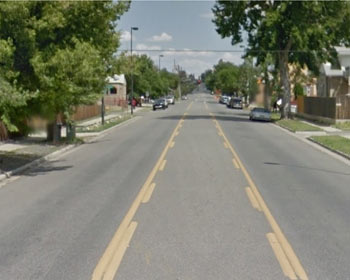Research Reports
Report Details
Abstract
 Child pedestrians are some of the most vulnerable users of our transportation systems, and they deserve particular attention when we consider traffic safety. Part 1 of this report identifies locations in urban areas where child pedestrians are at particular risk for fatal collisions with vehicles. We do so by examining 30 years of crash data for six American cities in order to locate areas with high child pedestrian fatality concentrations. Phase I of the study, which examined Denver, CO, revealed higher concentrations of child pedestrian fatalities around parks, as compared with other areas that children have been shown to frequent. In Phase II of the study, we specifically examined fatality concentrations near parks as compared with schools. Statistical analyses suggest that, once exposure is controlled for, child pedestrian fatalities concentrate around parks in densities 1.04 to 2.23 times higher than around schools. Also, the concentration of child pedestrian fatalities around parks is 1.16 to 1.81 times higher than the respective citywide concentration. Traffic risks for children around parks deserve further examination as we pursue the goals of Vision Zero and child safety on our streets.
Child pedestrians are some of the most vulnerable users of our transportation systems, and they deserve particular attention when we consider traffic safety. Part 1 of this report identifies locations in urban areas where child pedestrians are at particular risk for fatal collisions with vehicles. We do so by examining 30 years of crash data for six American cities in order to locate areas with high child pedestrian fatality concentrations. Phase I of the study, which examined Denver, CO, revealed higher concentrations of child pedestrian fatalities around parks, as compared with other areas that children have been shown to frequent. In Phase II of the study, we specifically examined fatality concentrations near parks as compared with schools. Statistical analyses suggest that, once exposure is controlled for, child pedestrian fatalities concentrate around parks in densities 1.04 to 2.23 times higher than around schools. Also, the concentration of child pedestrian fatalities around parks is 1.16 to 1.81 times higher than the respective citywide concentration. Traffic risks for children around parks deserve further examination as we pursue the goals of Vision Zero and child safety on our streets.
Traditional pedestrian and bicycle safety analyses take a reactive approach to traffic safety by investigating crashes, injuries, or fatalities after they occur. Also, examining trips that have been suppressed because of perceived road safety concerns facilitates a more proactive safety approach; however, a methodology must first be developed to estimate the number of pedestrian and bicycle trips that are suppressed specifically due to road safety concerns. Part 2 of this report accomplishes this by examining child pedestrian and bicycle trips to and from schools in Denver. By combining suppression rates derived from a survey examining parental perceptions of safety and the upper limit of trip frequencies derived from a GIS network analysis, we explore how grade level, gender, and adult supervision are related to childhood travel allowance in terms of street-level design characteristics, such as posted speed limits, vehicle volumes, presence of sidewalks and bike lanes, and the number of vehicle lanes. We then investigate how widespread these suppressed trips are by quantifying the number of children that are impacted and how their routes are altered. We finally detect built environment characteristics – such as street-level designs, network configurations, barriers, and destination siting – linked with high levels of suppressed trips. By integrating this tool with traditional traffic safety analyses, we hope to not only make the places where children are currently walking and biking safer, but to improve safety in places where children should walk and bike.
How to Cite
Ferenchak, Nick, Wesley Marshall, and Bruce Janson. Redefining the Child Pedestrian Safety Paradigm, MPC-19-374. North Dakota State University - Upper Great Plains Transportation Institute, Fargo: Mountain-Plains Consortium, 2019.